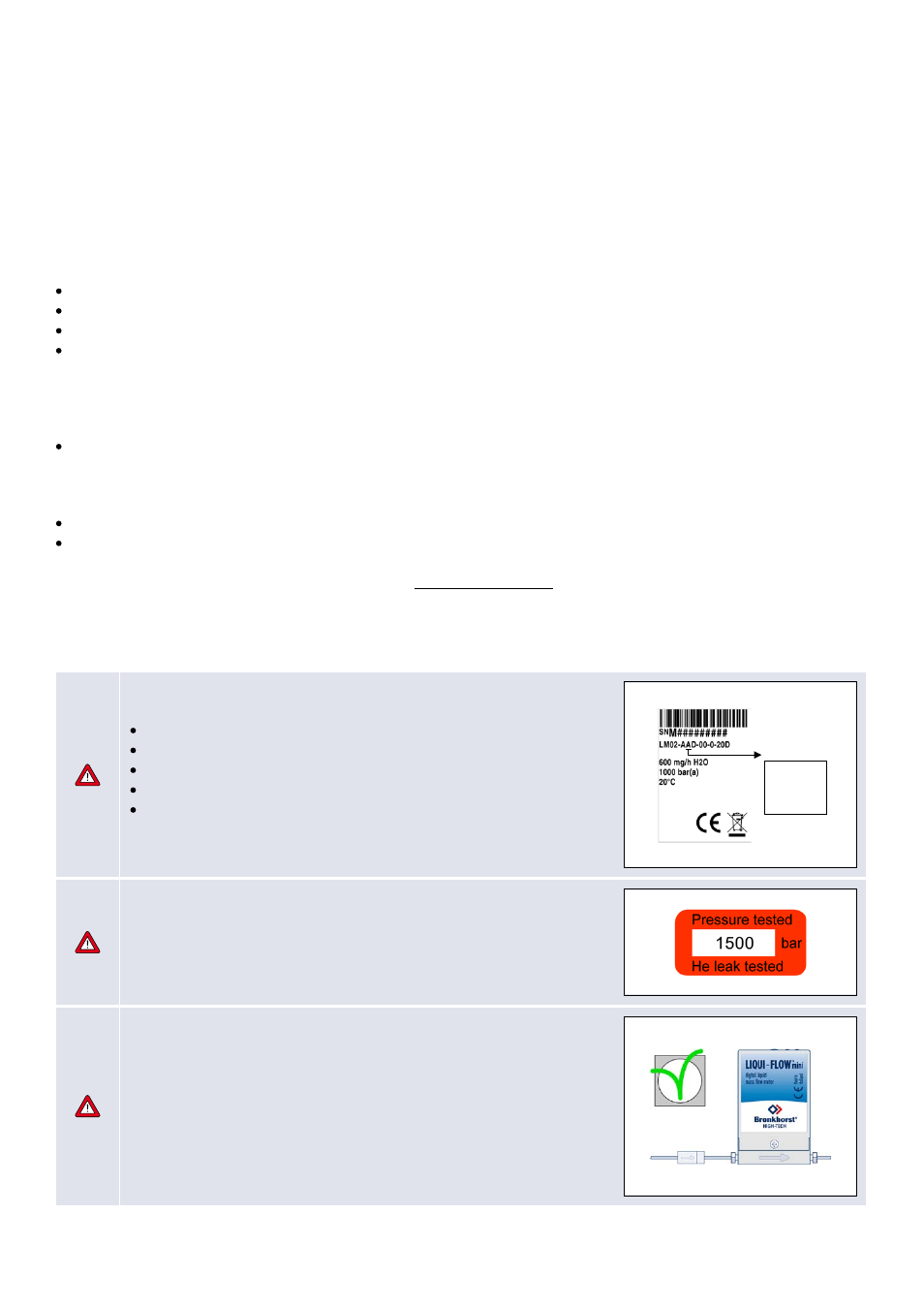Scope of this guide, Starting-up – Bronkhorst LIQUI-FLOW mini Quick Start User Manual
Page 2

9.17.066
2
SCOPE OF THIS GUIDE
LIQUI-FLOW
TM
mini instruments are one of the smallest micro fluidic Mass Flow Meters (MFM) of its kind. The instruments are
capable of measuring ultra low flow rates in ranges starting from 1.5…75 mg/h up to 12…600 mg/h, based on water. The
straight, duplex steel sensor tube (W1.4462) has an internal volume of less than 1 mm
3
and operates on the thermal measuring
principle. Due to its high pressure rating of max. 1000 bar (15000 psi) the MFM is suited for HPLC systems. The instruments are
equipped with a microprocessor-based printed circuit board, offering high accuracy and excellent temperature stability. The
RJ45 connection is used for power supply and for both analog and digital (RS232) communication.
This manual covers the short-form instructions for LIQUI-FLOW
TM
mini mass flow instruments regarding:
start-up
mounting
zeroing
operation
This manual will help you start-up your LIQUI-FLOW
TM
mini in only 10 steps. More detailed information can be found in
documents listed below:
Instruction manual LIQUI-FLOW
TM
mini series
(document nr. 9.17.065)
Consists information for basic and advanced operation, more detailed product information and instructions for
troubleshooting
FlowPlot Manual
(document nr. 9.17.030)
Hookup diagram LIQUI-FLOW
TM
mini
(document nr. 9.16.097)
These documents can be downloaded from the website: www.bronkhorst.com or can be sent by e-mail on request.
Starting-up
1. Check LIQUI-FLOW
TM
mini properties
Before installing it is important to read the attached label and check:
Flow rate
Fluid to be measured
Pressure
Output signal
Temperature
Output
A – 0…5 Vdc
B – 0…10 Vdc
F – 0…20 mA
G – 4…20 mA
2. Check test-pressure
Check the red-coloured sticker and make sure the test-pressure is in
accordance with normal safety factors for your application.
LIQUI-FLOW
TM
mini instruments are tested up to the pressure indicated
on the red sticker.
3. Check if system piping is clean
For reliable measurement always make sure the fluid stream is clean.
Use filters to assure a particle-free liquid stream.
Recommended pore-size: 2 µm.
If back flow can occur, a downstream filter is recommended too.
